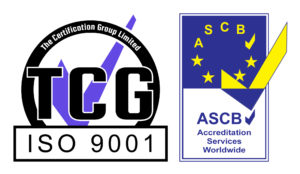Pump Screed
Pump Screed Key Uses and Main Features
Hello, today I am going to talk to you about pump screed and how you can make it work for you. I’m, Andy Parkin, the Managing Director to the Multi-Award-Winning Speed Screed.
So let’s get started.
Firstly, you may already be familiar with pump screed under one of its many other names, some of these include:
• Liquid Screed
• Screed Pump
• Flow Screed
• Calcium Sulphate Screed
When people talk about flowing screed they are almost always talking about calcium sulphate; this type of flowing screed makes up 90% of the current market.
Flowing screed will arrive ready mixed on site transported by a truck mixer. On arrival, it can be pumped directly into the area you need it to go.
What are the main uses for pump screed?
The screed can be used for multiple applications including:
• Bonded and unbonded screed layers
• In underfloor heating installations
• In thermal or acoustic layers (floating screed layer)
Pump screed is versatile, being suitable for multiple types of domestic and commercial properties.
Some of the main benefits of are:
• It shrinks less than other more standard screed mixes
• It works well on floating construction because it is less likely to curl at the edge.
• Cracking is reduced because of the reduction in shrinkage.
• Needs fewer movement joints – this is a positive reason for choosing pump screed. For example, bearing in mind any restraints, when the area is at least a 2:1 ratio, you could lay up to 1000m2 without needing to install a movement joint.
• It is ready for foot traffic in 24-48 hours.
• Speed of application – you can start laying the screed as soon as it arrives on site and it can be pumped at around 6 cubic meters per 30 minutes.
• Potential to reduce thickness – depending on the project the thickness of a typical pump screed can be reduced, reducing both weight and project costs.
• Can be force dried – using calcium sulphate screed allows you to force dry it once crystallisation has completed, usually after 7 days. Remove the remaining water using British standard guidelines as forced drying by heating the base layer must be done gradually. For underfloor heating systems, you will need to obtain external dehumidifiers.
• Underfloor heating systems commissioned in 7 days and the nature of pump screed means that underfloor heating can heat up and cool down much more quickly, bringing a lot of cost benefits to the end-user.
• Pump screed is self-compacting so no more hand tamping is needed.
Other things to consider when using pump screed are the choice of the final surface. Final walking surfaces must only be placed when the screed is completely dry. Pump screed is not suitable for use as a wearing surface or for areas where the screed is likely to get wet.
This has only been a very quick guide to the use of pump screed, if you have any questions you would like answered please contact us.
Our Accreditations
About Speed Screed
Speed Screed Limited was founded on the key principle of providing first-class customer service. It has since built itself an impressive reputation for delivering high-quality projects across the United Kingdom Floor Screed.
The company’s success is built on its belief in quality work, attention to detail, on-time completion, strong working partnerships and the recruitment of top-level staff. about us >








